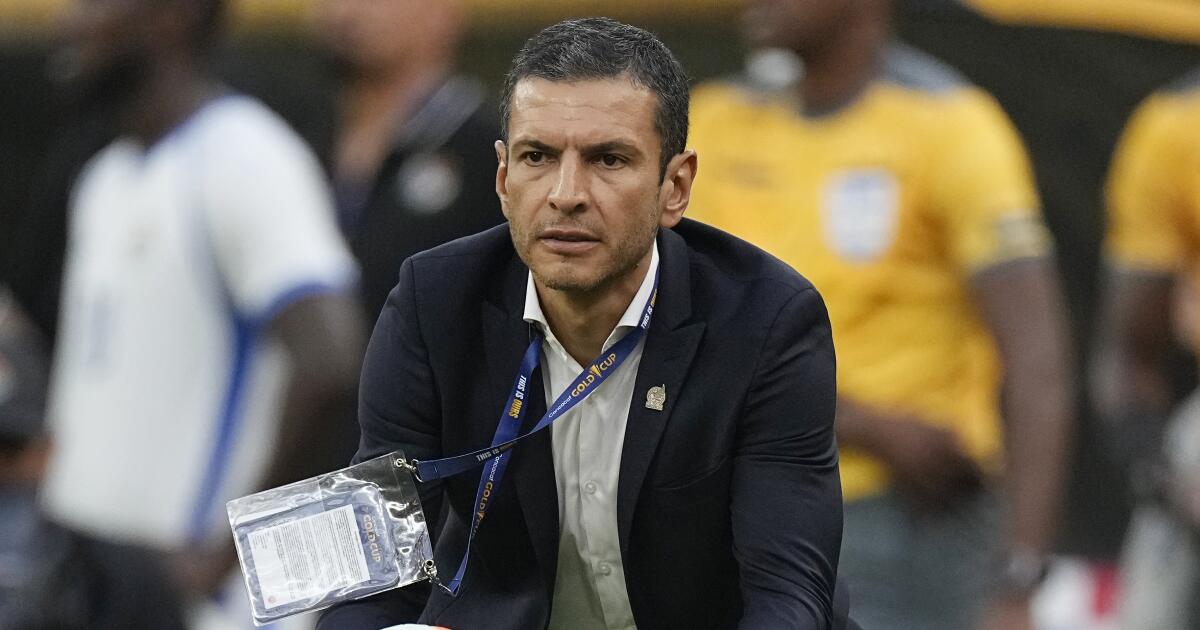A college football title game without the South? Bless your heart.
Since that Ohio State-Oregon night in Arlington, Tex., 16 teams entering this season had reached championship games in greater Phoenix, Tampa, Atlanta, the San Francisco Bay Area, New Orleans, greater Miami, Indianapolis and greater Los Angeles. Six of those teams had the name “Alabama,” four had “Clemson,” three had “Georgia,” and one had “LSU.” That left a measly one slot apiece for Ohio State and TCU, the latter of Fort Worth, which some consider the South before being corrected. It also gave the South a certain healthy self-image that in turn spread irk across the land.
Well, the sluggish roulette wheel of college football life finally made its way to Michigan (14-0) vs. Washington (14-0), who won their way all the way down here from the chillier air. “West Coast team, Midwest team, so it’s a little different for sure,” said Jaylen Harrell, a Michigan senior edge rusher and Tampa native who would have been 12 when Ohio State ravaged Oregon.
“I think it’s great,” said Michigan graduate linebacker Michael Barrett from Valdosta, Ga.
“I think it’s great,” said Michigan junior linebacker Junior Colson from Brentwood, Tenn.
Elaborating, Barrett said, “You know, you get some versatility into the national championship, not always looking for an SEC team always to sneak in there, and it’s great for the Big Ten, great for the . . .”
He paused there because the Pac-12 will disintegrate shortly because 10 teams fled it, including Washington toward the Big Ten, starting next season.
Barrett continued: “. . . great for the Big Ten. I was going to say Pac-12! But, yeah, I feel like it’s great for the conference to have two teams that’s going to be in the Big Ten playing for the national championship. It’s great. I know all the people down south are kind of hating that.”
Elaborating, Colson said: “You know, it’s allowing more teams now to start playing at that level, some teams started catching up. I think it’ll be great; it’s making football more competitive in a way. Most times it was just teams from the South — all those Clemsons, all those Alabamas, all those guys. So now, being able to add the Big Ten, the Pac-12, all those great teams that maybe didn’t get as much love, now they’re being put in the spotlight. It’s awesome.”
In their shared interest in luring football players who can help fulfill the eternal civic wish of beating the snot out of teams from other cities and states, the Michigan and Washington rosters do feature Southerners and near-Southerners. Huskies receiver Ja’Lynn Polk, who has spent the season catching 65 passes for 1,122 yards and nine touchdowns, came from Lufkin, Tex., about 60 miles from Louisiana, so that either counts or almost counts. The Huskies’ great quarterback, Michael Penix Jr., hailed from wee Dade City, Fla. (population about 7,300, up Interstate 75 from Tampa), certainly the South, before he moved into Tampa in high school, then hopscotched through college into Bloomington, Ind., and Seattle. “To be honest, I’m still wrapping my head around it,” he said of this moment and this floodlit stage.
Michigan has 33 players some could construe as coming from the South — 25 once one omits Texas and Northern Virginia — so the cheering from the South this time will come from scattered households. It marked a second straight year with a last matchup boasting freshness, counting TCU vs. Georgia last year. That’s when Coach Sonny Dykes spoke of the transfer portal and the upcoming 12-team playoff, predicted more darlings up ahead and said, “I’ve always believed that the cream rises and the more opportunities that schools outside of the traditional brands get, the more those schools can become traditional brands.”
Back in 2021, TCU went 5-7, Washington 4-8. So for now, there’s something afoot that looks something like variety and more than something like hope. “I think it says a lot about the parity of college football and how many teams could be in this spot,” Washington Coach Kalen DeBoer said.
What it says about the SEC and the Pac-12 and everything in between, that will have to confine itself to this season given the demise of the latter, a circumstance of the lack of parity in the calculating of TV deals.
“If we’re looking at it from a standpoint of it’s good to have college football strong in all points of the country geographically, then that’s obviously a very positive thing for the sport,” said ESPN’s Rece Davis, an Alabama graduate and the gracious host of that longtime church of college football, “College GameDay.” “It’s exciting. They’ve got the huge brand name in Michigan and a really good one in Washington, and maybe the most fun team to watch all season has been Washington. You have a very appealing game.
“If you’re looking at it from an evaluation-of-the-conferences standpoint, while I would still say the SEC was probably the best conference depending on how you evaluate this year, there was not the difference, and there was not the gap, in my judgment, that there has been in other years. And in fact, I said this season — and I still believe — that the Pac-12 had more contenders-slash-elite upper-middle class-type teams than any other conference. Maybe by the end, with the emergence of Missouri, maybe the SEC caught them, but for most of the year, the strongest upper-middle-class to elite teams were in the Pac-12. So because of that, I think it doesn’t feel lesser, if that’s what people think, because there’s not the Georgia, there’s not the Alabama, there’s not the Clemson. It feels like the two best teams are here, and so I think that’s great.”







